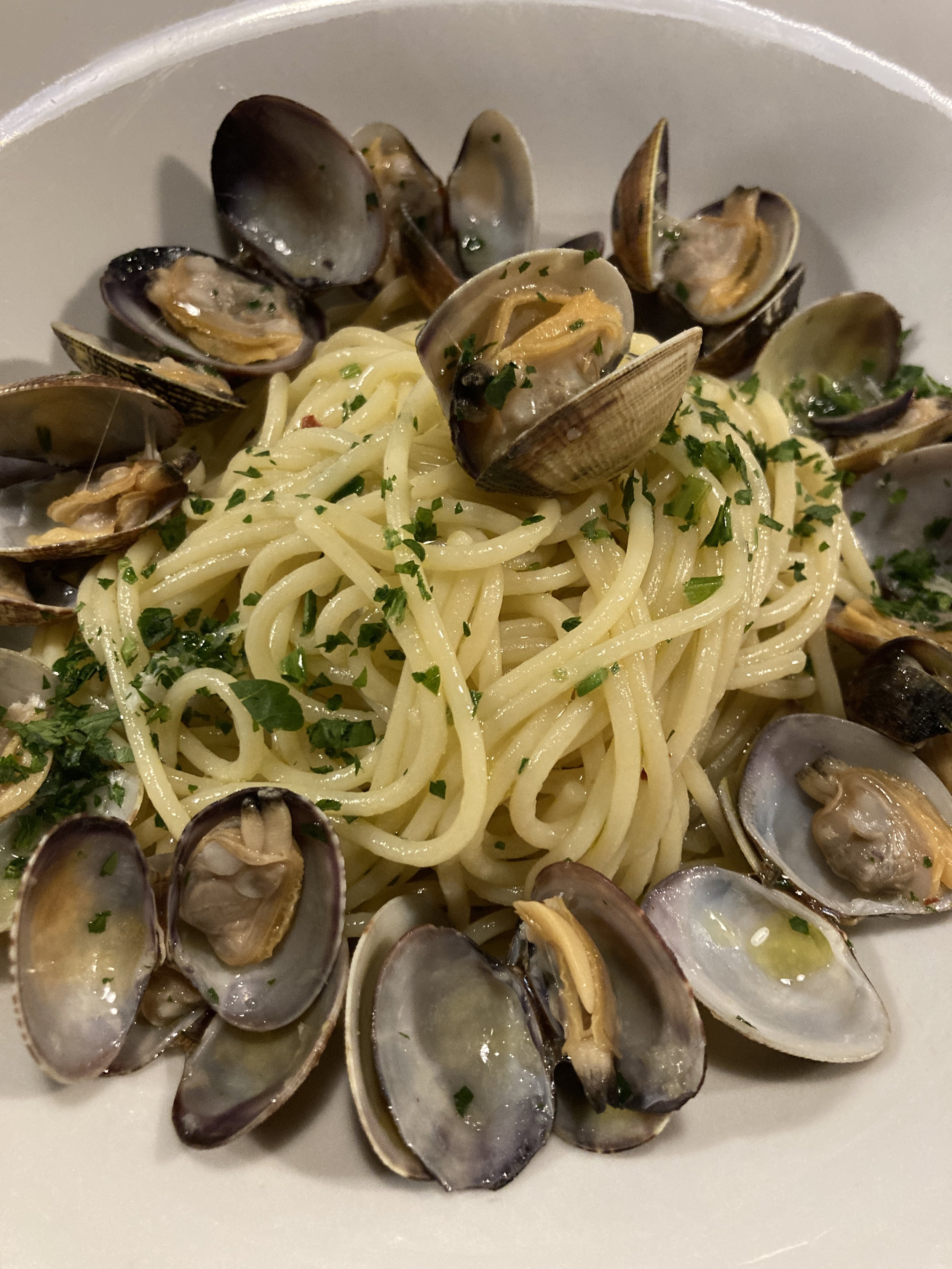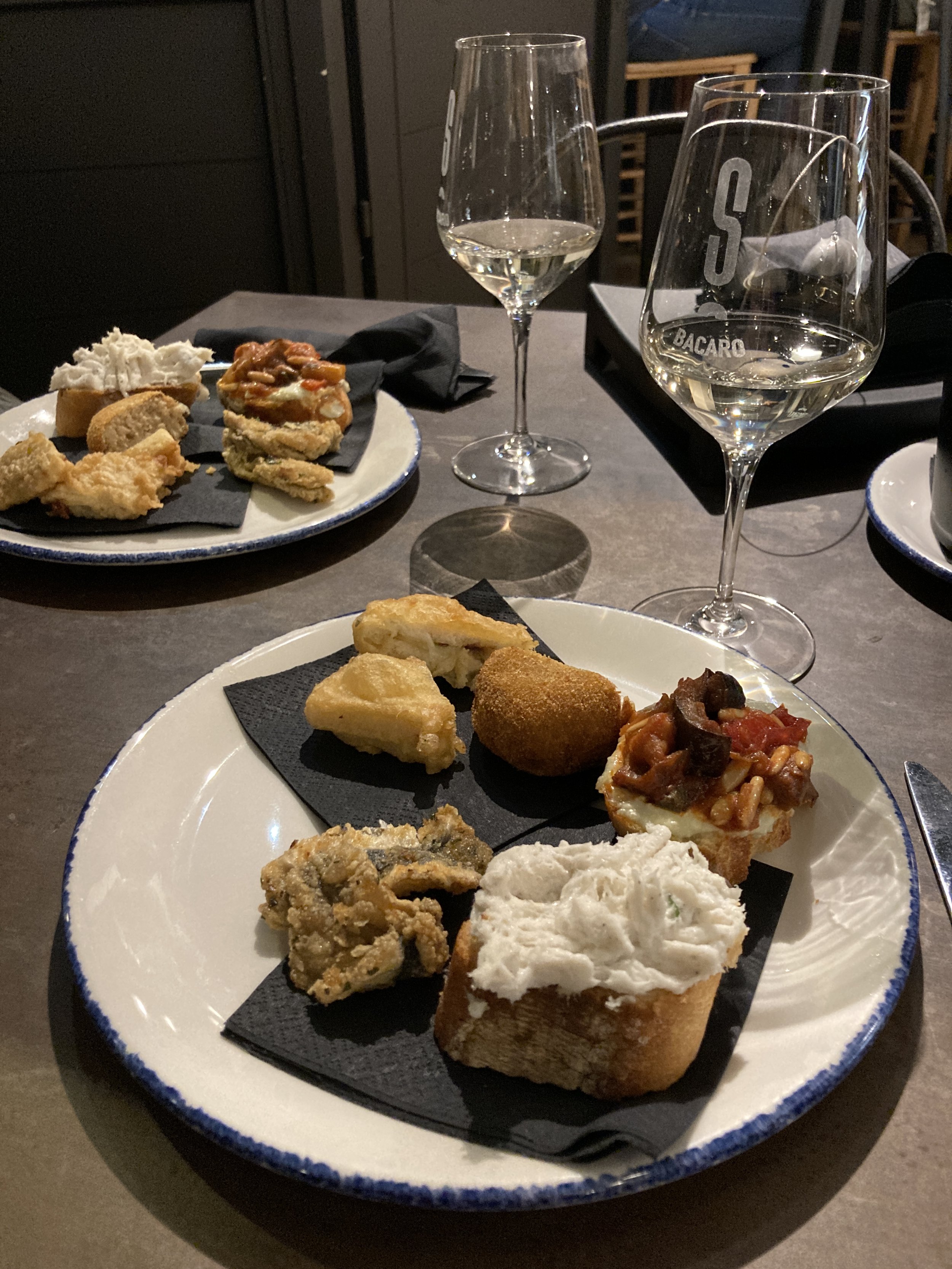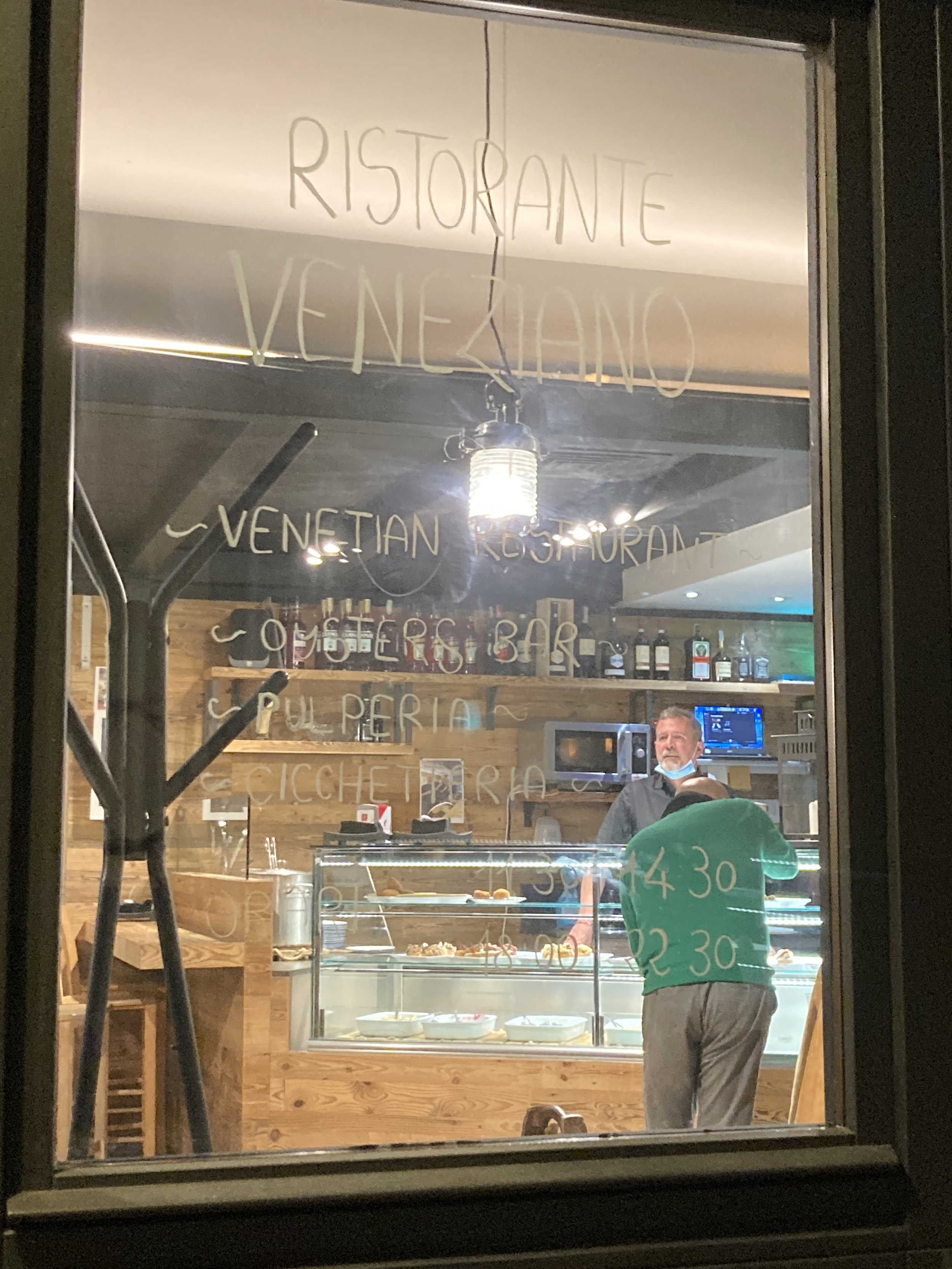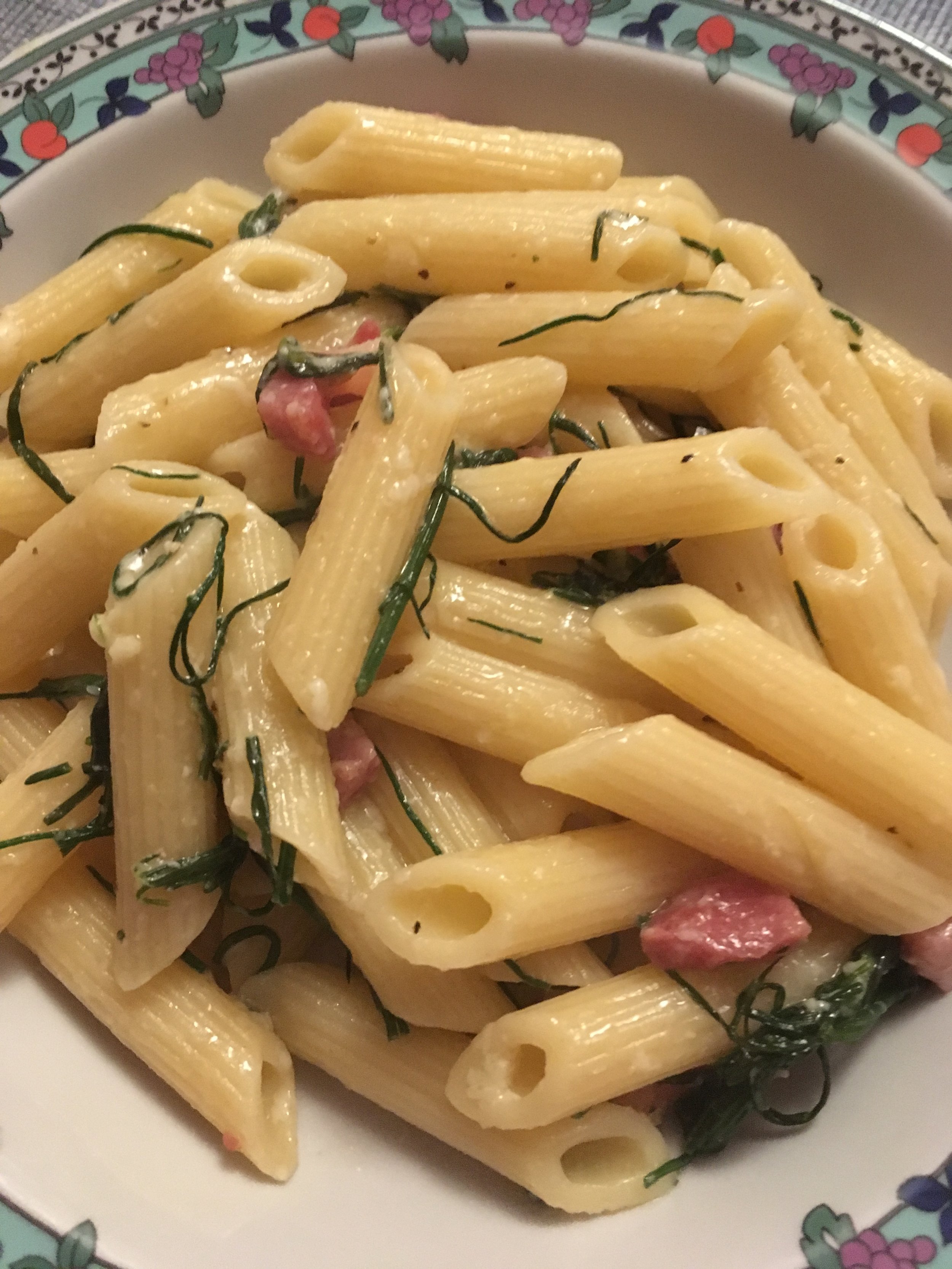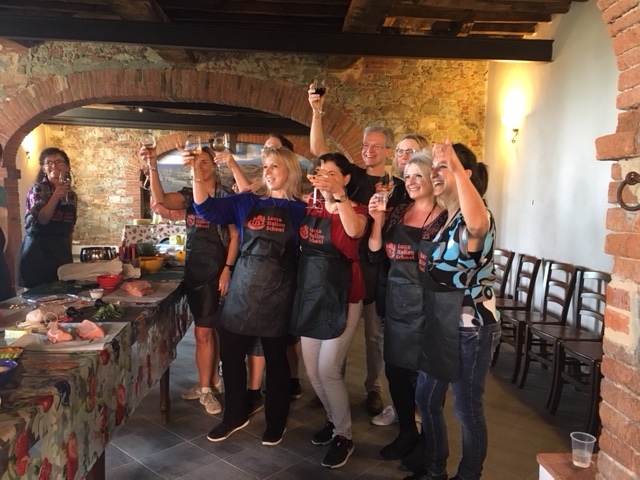A Venetian Style Restaurant in Padova
The bar area of Bacaro Frascoli, Padova
Part of the fun when visiting a new part of the world is experiencing the culture through its food. In Italy, each region has some common elements - freshness, local origin, and bright flavors - but each region also has its own special version of Italian cuisine. Think of Bologna with its filled pastas, Ligurian pesto, Tordelli Lucchese, Pici in Siena, Amatriciana from, well, Amatrice, Peposo from Impruneta. Learning about these dishes gives insight into local history and culture.
With so much of Italy surrounded by the sea, it is no surprise that coastal areas serve amazing seafood. In Venice, that seafood often shows up in cicchetti, an Italian “nibble” similar to tapas. These small plates are served in bars, bacari in Venetian dialect, especially as part of an aperitivo where they pair perfectly with a glass of wine, a Prosecco, or a Spritz.
The tradition of bacari and cicchetti fortunately extends inland to the town of Padova where I was delighted to discover the Bacaro Frascoli, a combination bar and restaurant serving Venetian style cicchetti and wonderful seafood dinners. The atmosphere is lively, with just the right murmur of voices. The staff is friendly and welcoming - come back a second time and they will greet you like regulars!
Today’s specials at Bacaro Frascoli
My first visit to Bacaro Frascoli was for dinner. The menu was enticing, as were the specials written on a large chalkboard. A separate chalkboard near the bar listed wines. The atmosphere was casual, but the food was elegant.
Dinner began with a glass of Prosecco, followed by an appetizer (shared with my travel companion) of gorgeous scallops in a fragrant herb scented broth, served glamorously on the shell and with slices of bread to soak up the tasty broth. You can bet that not a drop of that heavenly broth went to waste.
Next came a bowl of Spaghetti alle Vongole (Spaghetti with Clams). This is a simple dish, an Italian classic, and one of my favorites. I am just a bit fussy about how it is prepared and served. A good Spaghetti alle Vongole makes the most of simple ingredients - small clams, a touch of garlic, good extra virgin olive oil, a sprinkle of parsley, black pepper, and a bit of salt. The starchy broth from the cooked pasta adds a silkiness to the sauce.
No fancy additions please, and leave those clams in the shell! The dish served at Bacaro Frascoli checked all the boxes; it was outstanding. Fragrant, delicate, yet tasting of the sea.
Although the grilled fish specials sounded wonderful, I passed on another course. Ah, but how bad could dessert be if my friend and I shared it? The simple plate of biscotti (cookies) was served with a dish of cocoa dusted sweet custard for dipping. A perfect ending to a wonderful meal.
The dinner was so good that we decided to return the following night, this time to try the cicchetti.
The bar section of Bacaro Frascoli is up front and has a long communal table along with several individual tables. The counter displays a variety of cicchetti, small dishes to mix and match as either an aperitivo or, in this case, a simple, light dinner. Just mix and match what looks good, going back for more if you like.
There were several different types of bruschetta including a wonderful whipped baccala and one with gorgonzola topped with melanzane (eggplant). In addition to bruschetta there were a number of other dishes including octopus, polpette (meat balls), and variety of fried offerings. We choose some fried anchovies, tuna polpette, and an anchovy and cheese wedge. All were delicious and in combination with a glass of Prosecco made for the perfect light dinner. The spirited, casual atmosphere contributed to the fun.
It is rare for me to go to the same restaurant twice on a short trip. Usually I choose to sample a variety of places. But in the case of the Bacaro Frascoli in Padova I was happy to make a return visit. The two experiences were quite different - one a full meal and one a selection of cicchetti - but both were wonderful. I will definitely include this spot on my next visit to Padova. I hope you will too!
Bacaro Frascoli Via del Santo 93 Padova
email: info@frascoli. it
phone: +39 049 660 505
closed Mondays; lunch only on Sundays



